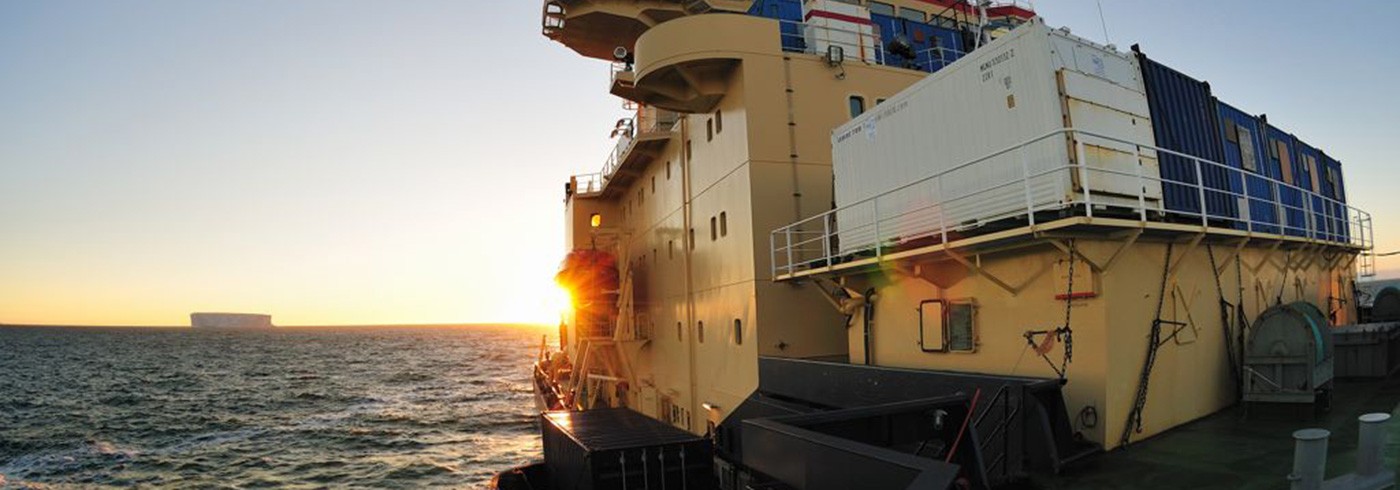Greetings from Pine Island Bay, West Antarctica! Today, like all other days on this trip, has been extremely busy and exciting.
A typical day on the ship for me involves waking up and heading to breakfast. While at breakfast I normally find out when the first core will be taken of the day, most likely around 9am. A core is a sample of the top sediments from the seafloor, normally containing sands, gravels and muds along with some other things. The project that I am working on here on the Oden is in understanding the retreat history of the ice sheet in this bay for the last ~20,000 years, the Last Glacial Maximum, to the present time. The locations that we choose to core are based on trying to understand this problem, and to reconstruct the paleo-ice sheet. The sediment cores are used to formulate and test models on how we think that the ice sheet retreated.
Between breakfast and the first core of the day, I have about an hour to prepare for the day; getting dressed for the Antarctic weather into my warm clothes, gathering all of our coring equipment that we will need for the day, which we secure inside over the nights, and finishing up analyzing samples from the night before.
At around 9am the excitement begins, the first core is lowered down to the bottom of the Amundsen Sea. The cores are Kasten Gravity cores. These three meter tall silver boxes penetrate through the sediment, and then close their own hinge doors when they hit something hard or are filled all of the way. The core is then taken up to the boat and brought into our outdoor lab space, also known as a tent on the aft deck of the boat.
The coring team, which I am on, then begin to process the core. This entails photographing the samples, making detailed descriptions and interpretations of the geology, measuring physical properties of the sediments, sampling for later work – such as grain size measurements, sampling for foraminifera (small organisms) for our onboard paleontologist and searching for other forms of material that contain calcium carbonate (normally different types of shelled organisms). The team consists of six people; four geologists from the USA, one micro paleontologist from Poland, one geotechnical person from Sweden/Canada and a few helpers when needed. While this is all being completed, the next core of the day is being taken. On a good day on the boat (weather, sediments, etc) we take and process around four cores, sometimes more.
This makes it a continuous and busy day for coring, and processing the samples. We try to take many cores to be able to understand the deposition in the bay as the sediments that we are coring are traces into understanding how ice sheets retreated to their current locations, and reconstructing their retreat history through time. The sediments left behind by the ice sheet are our keys in understanding the past.
A day in the life of a geologist onboard is pretty busy, but in a good way, full of the excitement of finding out what samples are being brought to the surface for us to study and to understand.






